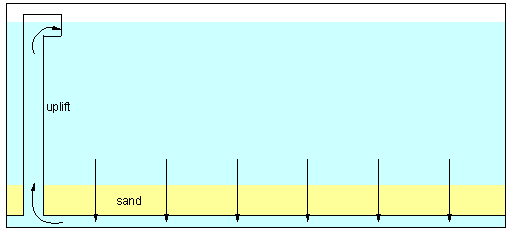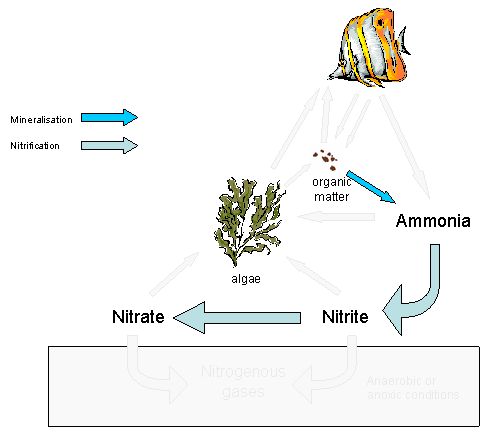
Figure 1: The basic undergravel filter. The lines indicate the direction of flow of water.
Undergravel filters have been around for a few decades. In the 1960's and 1970's they were the primary form of filtration used in closed marine aquariums. The name "undergravel filter" comes from their original use in freshwater aquariums where a plate was placed under the gravel which enabled water to be drawn through the gravel. In a marine aquarium, the gravel is replaced with sand or shell grit and to be accurate, the substrate (gravel, sand or shell grit) is the filter itself.
The basic design of an undergravel filter is a perforated plate covered by substrate. An uplift draws water from under the plate back in to the main area of the aquarium. This in turn draws water through the substrate as shown in Figure 1.

Figure 1: The basic undergravel filter. The lines indicate the direction of flow of water.
The uplift of the undergravel filter can be driven by airstone, placed down the uplift or by a powerhead at the top of the uplift.
The Nitrogen Cycle
Undergravel filters support mineralisation and nitrification processes of the nitrogen cycle as shown in Figure 2. The do this by providing a substrate for bacteria, the sand, and ensure a constant supply of oxygenated water through the substrate.

Figure 2: Aspects of the nitrogen cycle generally supported by an undergravel filter.
Advantages
Undergravel filters are cheap to buy or build and very cheap to run. They generally provide good ammonia and nitrite reduction.
Disadvantages
Undergravel filters do not usually provide denitrification and nitrate levels in the tank can build up over time. The perforations in the plates can get clogged over time, reducing the flow of water through the substrate. The substrate itself can also get clogged reducing flow.
Last updated: March 1, 2003